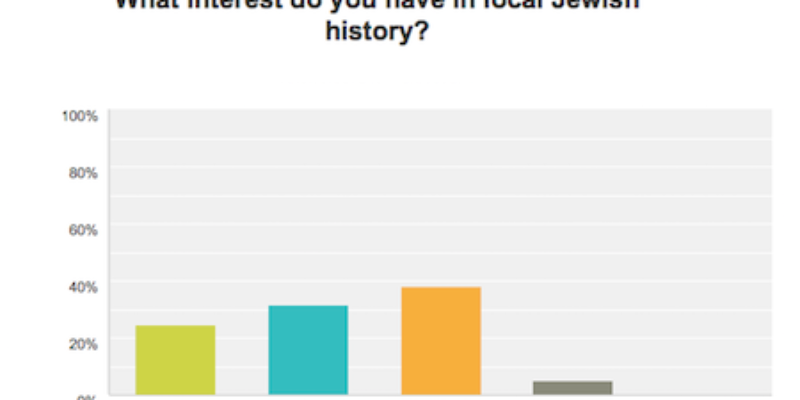I am working with the Washington State Jewish Historical Society to help them build a digital museum and history portal. I’m chronicling my direction and strategy for the project as I go along.
Now that I’ve gotten more comfortable in the office and have an idea of where to find the bathroom and emergency exits, I’ve been able to turn my attentions to what exactly I’m working on. That started, of course, with the WSJHS‘s assets—namely, all of the exhibits, events, publications, oral histories, and presentations it has done over the years. And there’s a lot.
With some limited exceptions, none of it has ever been put online. But with a population of 63,000 Jews in the Seattle area alone, but only several hundred having ever come to a WSJHS event, there are a lot of stories that have been told but haven’t been heard. So I sat down this week with the organization’s staff (it’s small—my presence increases the office by 50%) and worked through everything they’ve ever done.
Here’s a smattering:
- Recorded tours of old Jewish Seattle
- A book and recorded histories of Jews in Washington who have participated in sports one way or another
- A book of recipes, and accompanying stories, that date back generations
- An exhibit about Washington’s Jewish businesses that spent nearly six months on display at the Museum of History and Industry
- A collection of family trees that date back as far as six generations
- Presentations—which now reside as old photocopies—of family stories from the ’50s and earlier.
The sense I get is that the organization has great documentation of our state’s history dating to about the 1950s, but not a lot between then and now. Hopefully the stories we are able to begin collecting for this and the upcoming Passport to Washington exhibit will be able to fill in many of those holes.
Working on the content strategy to make so much of this accessible will need to be a primary task of the coming weeks.
Understanding the museum
And then there’s the collection of artifacts. WSJHS has a ton of photos, and a relationship with the University of Washington, which hosts the Jewish Archives. But much of what the archive contains is of more interest to academia than to folks looking up information on their families, so we need to start working on that as well. The initial plan is to use an open source software package called Collective Access, which appears to fit our needs for collections materials. The challenge will be integrating the collection with the stories.
The week’s other activity
 The other thing we needed to work on this week was to figure out who, exactly, would be interested in this site and what of all the content types we’ve been considering they would most be interested in. So we got that going and began to wait, with some nervousness that we’d get no response, for the answers to come pouring in. I reached out to my Facebook network, the other staffers and board reached out to theirs, and we connected via email as well. We ultimately came up with more than 200 responses, which I thought was great! Initial responses suggested that personal stories would be the most popular, which fit our assumptions. But milestone events—births, deaths, weddings, and the like—which we expected would be very popular, fell to the bottom. Very, very interesting….
The other thing we needed to work on this week was to figure out who, exactly, would be interested in this site and what of all the content types we’ve been considering they would most be interested in. So we got that going and began to wait, with some nervousness that we’d get no response, for the answers to come pouring in. I reached out to my Facebook network, the other staffers and board reached out to theirs, and we connected via email as well. We ultimately came up with more than 200 responses, which I thought was great! Initial responses suggested that personal stories would be the most popular, which fit our assumptions. But milestone events—births, deaths, weddings, and the like—which we expected would be very popular, fell to the bottom. Very, very interesting….
We also recognized that our survey respondents were skewing older, so right away I pushed more of my younger friends, those in their 20s and 30s, to fill the survey out. So how’d we do?
Find out next week…




